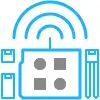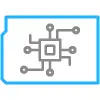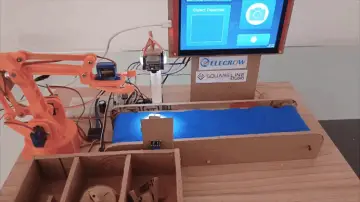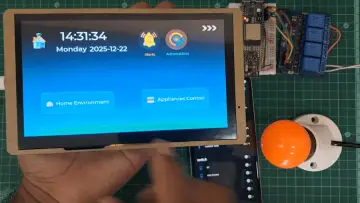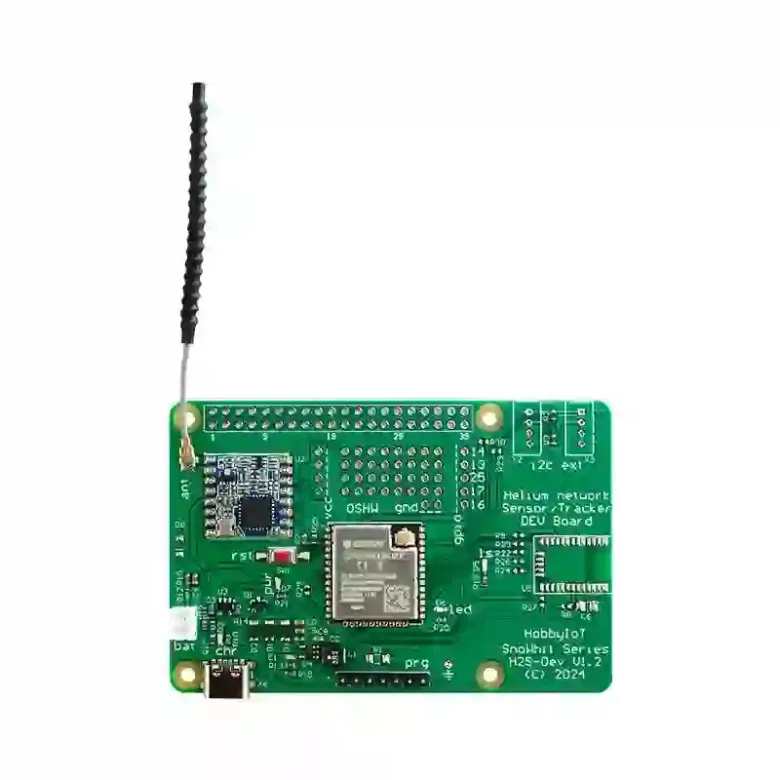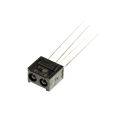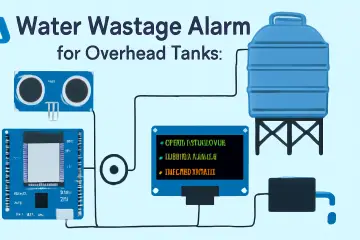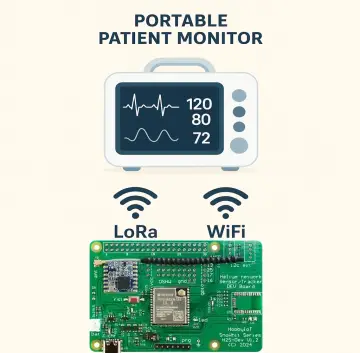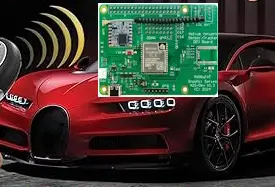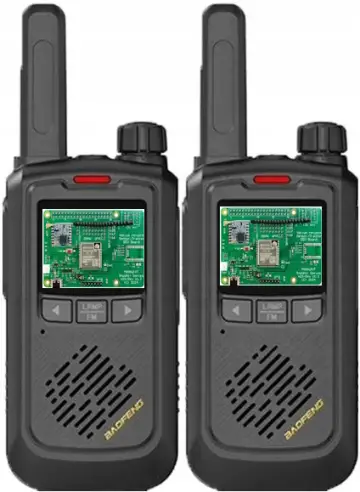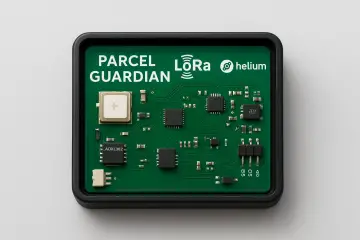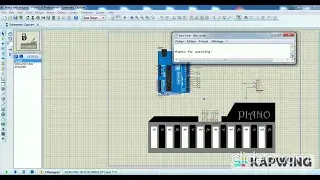Story
The LoRaWAN-Powered Cybersecurity Alert Node for EMS Infrastructure Monitoring
This project outlines the design, development, and implementation of a secure, energy-efficient, and scalable cybersecurity alert node for monitoring Enterprise Messaging Systems (EMS) infrastructure. The system leverages the H2S-Dev Board, an ESP32-based microcontroller with integrated LoRaWAN capabilities, to detect physical tampering, environmental anomalies, and unauthorized access in real-time. Alerts are transmitted securely over the Helium LoRaWAN network to cloud-based or on-premises EMS platforms, making it ideal for securing remote or sensitive infrastructure where traditional connectivity (e.g., Wi-Fi or cellular) is unreliable or unavailable.
1. Project Overview
The LoRaWAN-Powered Cybersecurity Alert Node addresses the need for robust physical and environmental security for EMS infrastructure, such as server rooms, network closets, or remote data collection points. By integrating multiple sensors with a low-power microcontroller and long-range LoRaWAN communication, the system provides real-time alerts for potential threats while maintaining energy efficiency and security. The solution is designed to integrate seamlessly with enterprise-grade messaging systems (e.g., Apache Kafka, RabbitMQ) and Security Information and Event Management (SIEM) tools for centralized monitoring and response.
2. Objectives
The primary objectives of the project are:
- Develop a Low-Power, Tamper-Resistant Node: Utilize the H2S-Dev Board to create an energy-efficient device capable of operating in remote or off-grid environments.
- Detect Physical and Environmental Threats: Monitor for physical intrusions, tampering, or environmental changes (e.g., temperature, humidity, gas leaks) that could compromise EMS infrastructure.
- Secure Alert Transmission: Use LoRaWAN and the Helium network to transmit encrypted alerts to ensure data integrity and confidentiality.
- Integrate with EMS Platforms: Enable seamless forwarding of alerts to enterprise messaging systems via MQTT or webhooks for real-time monitoring and response.
- Support Flexible Deployments: Provide multiple power options (battery, solar, USB) and hardware extensibility for diverse use cases.
3. Key Features
The system incorporates the following features:
- ESP32-Based Firmware: Arduino-compatible firmware for flexible programming and sensor integration.
- Multi-Sensor Support: Includes motion (PIR), gas (MQ-2), temperature/humidity (DHT22), and vibration sensors for comprehensive monitoring.
- End-to-End Encryption: AES-128 encryption ensures secure data transmission over the Helium LoRaWAN network.
- Cloud and EMS Integration: Supports MQTT and webhook integrations for forwarding alerts to EMS platforms like Kafka or RabbitMQ.
- Flexible Power Options: Operates on battery, solar, or USB power, enabling deployment in remote or off-grid locations.
- Onboard Prototyping: The H2S-Dev Board includes a prototyping area for custom hardware extensions.
- Optional OLED Display: Provides local visualization of sensor data and alerts for debugging or standalone operation.
4. Hardware Specifications
The system is built around the following hardware components:
| Component | Description | Role |
|---|---|---|
| H2S-Dev Board | ESP32 microcontroller with integrated LoRaWAN transceiver | Processes sensor data and handles LoRaWAN communication |
| DHT22 Sensor | Measures temperature and humidity | Monitors environmental conditions for anomalies |
| MQ-2 Gas Sensor | Detects smoke and flammable gases | Identifies fire hazards or chemical leaks |
| PIR Sensor | Passive Infrared sensor for motion detection | Detects unauthorized movement or intrusions |
| Vibration Sensor | Detects physical tampering or enclosure movement | Identifies tampering attempts on the node or infrastructure |
| OLED Display (Optional) | 0.96" SSD1306 OLED screen | Displays sensor data and alert status locally |
| Power Supply | Supports 3.7V LiPo battery, 5V solar panel, or USB power | Enables flexible power options for diverse deployment scenarios |
| Antenna | 868/915 MHz LoRa antenna (region-specific) | Ensures reliable long-range LoRaWAN communication |
| Enclosure | IP65-rated weatherproof enclosure | Protects hardware in harsh or outdoor environments |
5. System Architecture
The system follows a modular architecture to ensure scalability and reliability:
- Sensors: Collect data on environmental conditions (temperature, humidity), physical tampering (vibration), motion (PIR), and gas presence (MQ-2).
- H2S-Dev Board (ESP32): Processes sensor data, applies AES-128 encryption, and prepares payloads for transmission.
- LoRaWAN Communication: Transmits encrypted alerts via the Helium network using LoRaWAN Class A protocol for low-power, uplink-triggered communication.
- Helium Console: Routes data to cloud-based or on-premises integrations.
- Integration Layer: Forwards alerts to EMS platforms via:
- MQTT Broker: Mosquitto or EMQX for real-time messaging.
- HTTP Webhook: Custom endpoints for integration with dashboards or SIEM tools.
- EMS System: Integrates with enterprise messaging platforms (e.g., Kafka, RabbitMQ) or SIEM tools (e.g., Splunk, ELK) for centralized monitoring and response.
- Security Monitoring Dashboard: Displays alerts and sensor data for real-time situational awareness.
Architecture Flow:
6. Cybersecurity Implementation
The system incorporates multiple layers of security to protect data and ensure reliability:
| Security Layer | Feature |
|---|---|
| Data Layer | AES-128 encryption for all sensor data and alert payloads |
| Communication Layer | LoRaWAN protocol with Helium network for secure, long-range transmission |
| Application Layer | Secure MQTT brokers and webhook endpoints with authentication |
| Physical Layer | Vibration sensors for tamper detection; secure enclosure design |
| Firmware Layer | Secure OTA updates with authentication and integrity checks |
7. Communication Stack
The communication stack is designed for low-power, secure, and reliable data transmission:
- LoRaWAN Class A: Low-power uplink-triggered communication to minimize energy consumption.
- Helium Console: Manages device registration, routing, and data forwarding to:
- MQTT Broker: Mosquitto or EMQX for real-time alert delivery to EMS platforms.
- HTTP Webhook: Custom endpoints for integration with dashboards or third-party systems.
- Optional Bridges: Email or SMS notifications for critical alerts.
- Payload Format: Sensor data and alerts are formatted as JSON, encrypted with AES-128, and transmitted in compact LoRaWAN packets.
8. Testing and Validation
The system was rigorously tested to ensure reliability and performance:
- Intrusion Tests: Simulated physical tampering and motion detection to validate PIR and vibration sensor accuracy.
- Environmental Tests: Simulated temperature, humidity, and gas anomalies to verify DHT22 and MQ-2 sensor performance.
- Encryption Validation: Verified AES-128 encryption and successful payload delivery over the Helium network.
- Integration Tests: Confirmed MQTT and webhook delivery to EMS platforms (Kafka, RabbitMQ) and SIEM tools.
- Power Tests: Validated battery and solar-powered operation under continuous load for extended periods.
- Noise Filtering: Calibrated sensor thresholds to minimize false positives caused by environmental noise or minor vibrations.
9. Use Cases
The system is designed for a variety of mission-critical applications:
- Remote EMS Node Security: Monitors EMS endpoints in isolated or unsecured locations (e.g., rural data collection points).
- Server Room Protection: Detects unauthorized access or environmental hazards in IT server rooms and network closets.
- Data Center Monitoring: Provides environmental alerts for temperature, humidity, or gas leaks in data centers.
- Industrial Deployments: Enhances EMS infrastructure security in industrial settings, such as factories or warehouses.
- Critical Infrastructure: Secures utility or telecommunication nodes against physical tampering or environmental threats.
10. Future Enhancements
To extend the system's capabilities, the following enhancements are proposed:
- GPS Integration: Add a GPS module (e.g., NEO-6M) for geolocation tracking of remote nodes.
- Wi-Fi Fallback with TLS: Implement secure Wi-Fi connectivity for areas with unreliable LoRaWAN coverage.
- Local Storage: Add a microSD card module for local data logging during network outages.
- Frontend Dashboard: Develop a real-time monitoring dashboard using tools like Grafana or Node-RED.
- SIEM Compatibility: Enhance integration with SIEM tools (Splunk, ELK, Wazuh) for advanced threat analytics.
11. Repository Structure
The project is organized as follows for clarity and scalability:
12. Conclusion
The LoRaWAN-Powered Cybersecurity Alert Node is a robust, secure, and scalable solution for protecting EMS infrastructure from physical and environmental threats. By leveraging the H2S-Dev Board’s low-power capabilities, LoRaWAN communication, and multi-sensor integration, the system ensures real-time alerting and seamless integration with enterprise systems. Its flexible power options and tamper-resistant design make it suitable for diverse environments, from remote data points to critical data centers, enhancing the physical security layer of EMS deployments.








